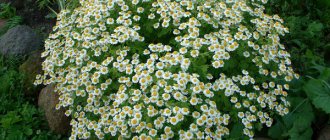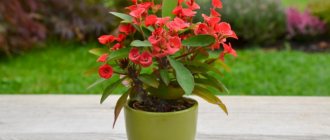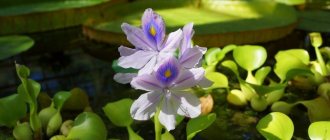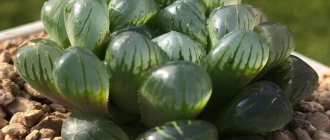Bouvardia longiflora
This Mexican beauty is easy to care for and is one of the most fragrant bouvardias. The plant has a delicate jasmine scent, and in good light it will delight you with abundant flowering from May to December. It has tubular flowers of various colors - from white to deep red.
During the flowering period, bouvardia needs abundant watering and regular irrigation. It is important to avoid stagnation of moisture in the pot to prevent root rot.
Sarcococcus low
Sarcococcus low has a pleasant strong aroma, which it will exude from January to March. The white or pinkish bell-shaped flowers of this plant do not exceed 1 cm in length. After flowering, strong glossy black berries are formed on the sarcococcus.
The flower does not require care and can grow even in a polluted and smoky atmosphere. Loves moist, well-drained soil, but at the same time is drought tolerant. Feels great in the shade and has excellent immunity to diseases and pests.
In winter, the plant should be kept in a cool room with high humidity.
Caring for indoor jasmine at home
The tropical plant is picky. This shrub, which cannot tolerate temperature changes and cold, can only grow at home; it cannot survive in the open air in our latitudes. Caring for jasmine must be very careful.
Temperature
For indoor jasmine during flowering (spring and summer), the average temperature is comfortable - from +21...+26 °
C. A sharp cold snap can be harmful, and at +15
°
C jasmine will not only stop development, but may even die.
In the winter season, when the plant is resting, it is recommended to place it in a colder room at a temperature of +11°
C to +13
°
C, otherwise flowering will not take place. To encourage jasmine to do this, experienced gardeners advise giving it a temperature shock by placing it in cooler conditions with high humidity for a while. As a result of such a shake-up, the bush blooms quite quickly. Different reactions to wintering are due to the types of jasmine. Sambac is considered a heat-loving variety.
At the stage of respite from flowering, the plant needs +18°
C. The vine’s attitude towards drafts is extremely negative. Ventilation of the room with the flower should be done very carefully.
Lighting requirements
Jasmine does not tolerate shadows or artificial lighting. It prefers a sufficient amount of diffused sunlight, but does not tolerate direct light. That is why it is recommended to place the flower on windowsills on the western and eastern sides.
On the north side, the plant will not bloom due to a clear lack of sun, and on the south windowsill it will have to be constantly moved away from the window or shaded from the light.
Irrigation
The frequency of watering should correspond to the ambient temperature. In the warm season, the plant must be watered every three days. It’s clear that it’s time, you can use one and a half centimeters of dry soil on top. It should always be slightly moistened - without drying out or excess moisture.
With the onset of the cold season, the intervals between waterings must be increased to 6 days; irrigation should be done only after the middle layer of soil has dried. Settled water acidified with apple cider vinegar in a ratio of 1 tsp will help maintain soil quality. per liter container. It is used every third watering.
Air humidity
The main difficulty in growing jasmine is maintaining the proper level of environmental humidity. Capricious flowers do not tolerate too dry air: in such conditions they are susceptible to diseases and attacks by pests, due to which they stop blooming and may die over time.
In spring and summer, the shrub is usually sprayed every other day with softened water, on hot days - twice a day. In the winter season, when the air is dry from heating and the temperature is high, spray every three days. Auxiliary methods are:
- using a humidifier;
- installing a stand with wet moss or pebbles under the flowerpot;
- laying a damp cloth on the heating radiator;
- placing dishes filled with water near the flower pot.
Fertilizer
Jasmine requires maintaining optimal soil conditions. It should be loosened, drained, slightly acidified. Usually a special mixture for roses or begonias is used for planting. In other types of soil, azalea substrate is added to a third. All ready-made soil mixtures already contain the necessary fertilizers and microelements.
To create ideal growth conditions and generous flowering from April to August (and sambac until the end of flowering), jasmine is fed with universal liquid fertilizers intended for flowering plants. It is advisable to alternately use mineral and organic nutrients. And for foliage, which perfectly absorbs microelements, foliar spraying is very useful.
Transfer
After purchasing and adapting to the home environment, the flower is transplanted into a larger pot. In the first years, transplantation is carried out annually, and later - every two to three years. A new pot is taken a few centimeters larger.
When replanting, careful handling of the root system, which should not suffer from crowding, is of paramount importance. In this case, the roots are carefully straightened. An important factor is good drainage of the pot, otherwise excess moisture will cause rotting of the root system.
Trimming
The formation of the crown has a positive effect on the development of the plant. A favorable time for pruning is the end of the dormant period (February - March). Pruning helps promote growth and lengthen flowering.
It is important to take care to completely remove dried and damaged shoots, leaves and remaining flowers. The shoots should be shortened by a third, in the case of sick ones - by half, as a result new young branches will appear.
Reproduction
Indoor jasmine can be propagated in two ways: by cuttings and layering; it will not work with seeds.
- The first method is considered quite painstaking and complex. It is carried out upon completion of pruning. The removed shoots are placed in water, where they take root within a month, and then planted in the ground. To speed up the rooting of cuttings, oblique cuts are kept in a growth stimulator.
- The method of propagation by layering is much simpler; it is used in spring and summer mainly for climbing varieties. In this case, the branch is dropped into an additional container with soil and the required level of humidity is maintained in it. After the roots have formed (usually in the fall), the young shoot is carefully separated from the main one and planted in its own flowerpot.
Jasmine Sambac
This unusual plant with a sweet, intense scent blooms all year round, taking a break for 2-3 months. Its flowers are used in perfumery and to flavor tea.
Popular varieties:
- Arabian Knights - unpretentious, with a strong sweet aroma and double flowers;
- Grand Duke of Tuscany – capricious, with a rich floral scent and white, dense flowers;
- Maid of Orleans - the flower lives for a day, then falls off, giving way to others;
- Belle of India is unpretentious, blooms all year round with white double flowers.
Jasmine Sambac is light-loving, prefers light, neutral, well-drained soil, and is afraid of drafts and direct sunlight. On the north side and under artificial light it will wither away.
The plant is susceptible to attack by aphids, scale insects and spider mites.
Is it possible to keep a jasmine flower at home?
You can keep a jasmine flower in a pot at home, but you should not put it in the bedroom, since the strong aroma during flowering can lead to headaches even in healthy people. Like all flowering plants, jasmine can be dangerous for allergy sufferers. There are many contradictory superstitions associated with it:
- The Chinese believe that he can make the space around him harmonious.
- Others, on the contrary, believe that this flower is a “husband’s killer”, that is, a married couple may face divorce or the woman may remain a widow.
- It has a mild invigorating effect and gives strength in difficult situations.
- Dispels depression and apathy, improves mood.
- “Peacemaker” because it helps overcome conflicts.
Gardenia jasminoides
Gardenia literally captivates with the jasmine scent of its snow-white double flowers. Its scent is used in their compositions by famous perfume brands: Dior, Chanel, Nina Ricci, Guerlain. In addition, this plant is known for its healing properties and is used in folk medicine. Blooms from July to October.
Popular types:
- Radican Variegata - a dwarf variety, ideal for bonsai;
- August Beauty – blooms profusely with large double flowers;
- Fortuniana – has large camellia-shaped double flowers;
- Four Seasons - blooms all year round.
Gardenia loves high humidity, acidified soil, good lighting and warmth. During the formation of buds and flowering, you cannot rearrange the pot - this can lead to the dropping of buds and flowers. Afraid of drafts.
Mr. Summer Resident warns: Difficulties in growing jasmine
Failure to follow the rules for growing jasmine can cause complications during its growth and flowering. By analyzing the changes that have occurred in the conditions of keeping the flower, you can discover the causes of its malaise and eliminate them.
- Yellow, wrinkled foliage indicates dry air in the room and insufficient humidification.
- Leaf fall on a plant may begin due to oversaturation with moisture. The health of the leaves directly depends on the condition of the roots, which cannot tolerate excess water and begin to rot.
- Insufficient lighting also negatively affects plant growth. It begins to stretch upward, become deformed, and lose leaves.
Lack of flowering indicates the following deficiencies in maintenance:
- failure to maintain the required humidity;
- temperature changes;
- lack of nutrients;
- lack of lighting;
- pest attacks.
Indoor jasmine has become very popular not only for its decorative value, but also for its wonderful aroma. Its flowers are used in traditional medicine, aromatherapy, and perfumery. A fragrant tea is prepared from them. By correctly understanding the recommendations and following them, you can achieve the blooming of this wonderful flower at home.
Pittosporum fragrant
Umbrella inflorescences of white pittosporum stars emit a rich, sweetish odor. Flowering begins in the 4th year after planting and lasts from March to July.
The plant needs sufficient light for the formation of buds and rich foliage color. Afraid of heat and sudden temperature changes. Has good immunity.
Popular varieties:
- Nana - a large number of shoots with glossy dark green leaves;
- Variegate is a spectacular plant with soft green leaves dotted with white spots.
In winter, this flower should be kept indoors without drafts at a temperature of 10-14°C.
Raphiolepis umbellata
White or pinkish fragrant flowers of raphiolepis delight the eye from December to May. Their intense and sweet aroma invigorates and tones.
This rare plant reaches 1.5 m in height and is recommended for growing in bonsai style.
Raphiolepis is unpretentious and hardy, but grows slowly. Loves sunny places with shade and moist, well-drained, slightly acidic soil. Tolerant to short-term soil dryness.
Stephanotis profusely flowering
This is the only type of stephanotis that is grown indoors. At the same time, its weak stems need support.
The plant blooms from May to the end of summer, sometimes again in September. Its delicate waxy flowers of cream, white or purple color have a strong, pleasant scent.
Stephonatis does not like drafts and overheating, and it may not bloom in a pot that is too spacious. Prefers rooms with high air humidity and diffused lighting. Loves loose neutral soil. Needs spraying. Picky about water quality.
Appearance and homeland of stephanotis
Madagascar jasmine is actually found in Madagascar, and it also grows in Japan, China and other subtropical and tropical regions. This small climbing shrub has been known in home gardening for more than two centuries. In nature, a powerful vine is capable of climbing to a height of five meters. Domestic specimens require special supports to support their own weight. The dark emerald oval ten-centimeter leaves of the vine are dense, glossy with pointed ends. They are separated in the middle by a lighter vein.
The main value of the plant is its snow-white, fragrant flowers , arranged in clusters, each of which has up to 7 three-centimeter wax stars. It is customary to weave these delicate flowers (along with orange blossom) into brides’ hairstyles. After the fancy stars fade, elliptical seed pods filled with flying seeds similar to dandelion seeds ripen in their place.
The ability of liana-like exotics to bend along guides is used to create fancy flower arrangements in the form of hoops, balls, hearts and other shapes. They decorate window openings, arches, and walls. But most often it is grown in greenhouses and winter gardens.
Eucharis grandiflora
This tropical beauty is not demanding in care, easily adapts to the microclimate of the room and even with a minimum of care begins to form flower arrows. Blooms 2-3 times a year for 3 weeks.
Eucharis prefers intense, but not bright light and infrequent watering. Loves light, nutritious soil. Will be grateful for regular spraying and wiping of leaves. If there are sharp temperature fluctuations, it may die, and in a container that is too large, it may not bloom.
Propagation by seeds
Instructions for propagation by seeds
- The seeds are placed in warm water for 48 hours.
- A drainage layer is placed at the bottom of the container. The container is filled with peat substrate with sand.
- The soil mixture is watered.
- The seeds are laid out on the surface of the substrate and gently pressed into the ground.
- The container is covered with glass to create a greenhouse effect. Next, she is taken to a room where it is +25 degrees.
- Every day the glass is removed for 15 minutes to ventilate the soil.
- The soil is moistened every 2-3 days.
Additional Information. Sprouts should be expected after 6 weeks. As soon as they have several leaves, each plant is transplanted into a separate pot. Care consists of timely watering, protection from direct sunlight, maintaining temperature conditions in summer and winter, and spring and summer fertilizing.
Murraya paniculata
Exotic Murraya, growing up to 1.5 m in height, has a surprisingly pleasant fresh aroma emanating from its tiny white flowers.
Flowering begins after the fifth year of life and occurs 2 times a year, after which sweet edible terracotta-colored berries with a citrus aroma are formed on the murraya.
Popular varieties:
- Minima - a tree up to 0.6 m high, used to create bonsai;
- Min-a-min – shrub up to 1 m high, with a dense crown;
- Warf Compact is a miniature tree 10-15 cm high and leaves 0.5 cm in diameter.
Hoya fleshy
Hoya fleshy has glossy foliage and beige, waxy, star-shaped flowers with an intense, sweet scent. It blooms in early summer, producing nectar that drips from each petal.
Hoya is unpretentious and tolerates cold and heat well. Loves well-lit places and loose, drained soil. Sensitive to dampness. Afraid of mealybugs.
This flower needs regular feeding with fertilizers for epiphytic plants. You can replant at any time of the year.
Trimming and pinching
Before the plant begins to grow strongly, a pruning procedure is performed. It allows you to shape the appearance of the flower, as well as keep it well-groomed and neat. Adult lashes about a meter long, if not trimmed, become exposed and spoil the appearance. They need to be cut to half their length, then new side shoots will grow and the plant begins to rejuvenate. Also, during pruning, dry and weak stems are completely removed.
Pinching is done to stimulate the growth of young lateral shoots on which flowers form. You need to pinch the top of the shoot so that up to eight pairs of leaves remain on it.
Thanks to these manipulations, you can make jasmine bloom continuously all summer.











